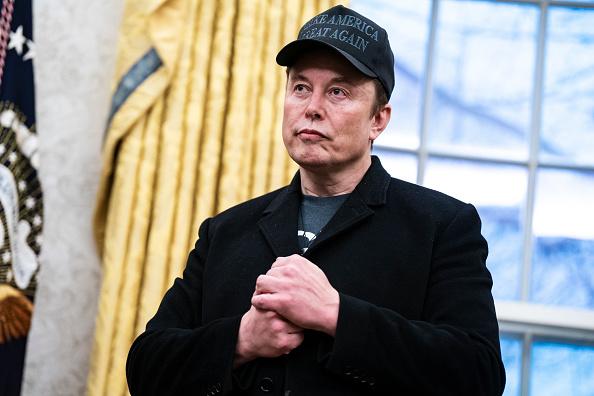Hosts
About the episode
For the past month, chaos and confusion have gripped Washington and the federal government. Elon Musk and his Department of Government Efficiency, or DOGE, have served as an iron fist of the Trump administration—ransacking government agencies, lighting fires in various departments, and generally firing as many people as they can get away with. Much of this work is plainly illegal. Every 12 hours, it seems, another federal judge rules that the Trump administration has exceeded its executive authority.
Efficiency is a worthy goal, and some of the programs that Musk and his team cut may turn out to be wasteful. Still, the way Musk has gone about his work—destroying life-saving programs at USAID, mistakenly offering buyouts to nuclear assembly engineers and essential doctors with Veterans Affairs, slashing funds for important studies and data collection programs across government—suggests that his bureaucratic blitzkrieg isn’t just illegal; it’s careless and harmful. The U.S. deserves a theory of government more sophisticated than “F-ck around and find out.”
So, what would an effective DOGE look like? Today’s guests are Michael Geruso, an associate professor of economics at the University of Texas at Austin, and Tim Layton, a professor of health care policy at UVA. We explain why any sensible waste and fraud search-and-destroy effort should start with health care spending. Then we get very nerdy about waste and fraud in health care. Most importantly, we talk about trade-offs. It’s a myth that there is some pot of $10 billion just lying around, doing nothing, gathering dust. Every dollar of federal government spending goes to a person in a place doing a thing. And that means that every dollar we cut will have a recipient on the other end who is losing a dollar. Taking government efficiency seriously requires thinking about both sides of this equation: What do we get when we spend this dollar, and what do we lose when we take that dollar away?
If you have questions, observations, or ideas for future episodes, email us at PlainEnglish@Spotify.com.
Host: Derek Thompson
Guests: Michael Geruso and Tim Layton
Producer: Devon Baroldi
Summary
In the following excerpt, Derek talks to Geruso and Layton about how the federal government spends on health care, with an eye toward figuring out how we could actually cut waste.
Derek Thompson: Mike, so we’ve got DOGE out there scouring the government for savings, and I wanted to bring on some economists to talk about where a search-and-destroy effort for wasteful spending might actually find billions of dollars in waste. So first question, why am I even talking to you? Why are we starting with health spending?
Michael Geruso: Well, if you’re looking to cut government spending, the three biggest buckets that there are are health care, Social Security, and defense. Together, those three are about 60 percent of the federal budget. And of those three, health care is the biggest part. About one out of every $4 the federal government spends is on health care, either in Medicare or Medicaid. Those are the two biggest components. Medicare, the program for the elderly, Medicaid, the program for lower-income Americans, and the rest of what the government spends has to fit into what’s left over. Medicare alone is about $900 billion a year. So almost a trillion dollars in Medicare. And so, in a program that big, even finding 1 percent of fat to cut is $10 billion. Most of federal agencies have budgets far below $10 billion. And so, even a small slice of that very big base, you could imagine finding some real savings in.
Thompson: Right, like cutting NIH by $10 billion is a 20 percent cut, one out of every $5 that universities are getting for medical research suddenly gone. But in Medicare, you’re talking not about 20 percent, but 1 percent. That’s why it makes sense to focus in these bigger buckets. Tim, we’re talking about government acting essentially as the nation’s largest insurance company, Medicare, Medicaid, Veterans Affairs.
And if we’re going to understand how to hunt for waste and even fraud in government health spending, I think we should understand a little bit about how government spending on health care actually works. So, Tim, let’s say I go to the doctor with chronic leg pain. The doctor could prescribe me Tylenol or he could send me off to get five blood scans, an MRI scan, a CT scan, and a prescription for new nerve pain therapy that costs $10,000 a month, right? Washington doesn’t know what treatment plan is right. Is it the Tylenol that’s like 2 cents, or is it this other plan that’s like 20,000 bucks a month? So how does the government, acting on behalf of the taxpayer, approach this very challenging question of how to reimburse good care with an eye toward controlling costs?
Tim Layton: Yeah, I think your example is perfect here. I think first you need to understand that the government has essentially decided that if people want to, they should be able to choose to enroll with a private insurer and most of the public health insurance programs. And today, over 50 percent of Medicare beneficiaries are in a private plan. That number’s over 70 percent in Medicaid. So loads of people prefer private plans, and we want to support that decision, but we also want that private option to be budget neutral, to not cost any more than if folks had chosen the traditional public plan. And so, how do we set payments to these plans to support choice and budget neutrality? Well, we wouldn’t really want the government to simply reimburse every expense that the insurers incur, plus some fee for administering the plan. That would mean that no party in that case—not the doctors, not the insurer—have any incentive to control costs.
And that would lead to the second situation that you described in your example, where the doctor prescribes a ton of unnecessary stuff, five blood tests, an MRI scan, CT scan, etcetera. And in that type of case, costs can spiral out of control in this private option, as enrollees, they want stuff, right? And the best way for insurers to get enrollees is to just give them more stuff, and insurers will just keep on giving and giving and giving, because they don’t have to foot the bill, because the government’s just going to reimburse them, right? And so, this is essentially the incentive structure that doctors face in the traditional fee-for-service part of Medicare. And one of the reasons why we started this private option in the first place. And so, instead, what you want to do is just pay the insurer a fixed amount for each month for each person that they enroll.
We often call this capitation. And in that world, if an insurer reigns in costs by negotiating lower prices with doctors and hospitals, by directing patients to more efficient care, or even by straight-up rationing and saying no for stuff, then they can profit off of part of the cost savings they generate. And hopefully they take a portion of those savings and pass them through to the patients in the form of additional benefits, like vision and dental, and things they wouldn’t get in Medicare. And there’s some evidence that they do do that. But now more importantly, there is an incentive to restrain spending, to prevent costs from spiraling out of control and to maintain that budget neutrality, make it so this private option doesn’t end up costing a ton more. But a major problem with this fixed-payment-per-person set-up, is that plans will vastly prefer to enroll some patients versus others in that case.
Say an average patient costs $5,000 a year, and so we set the payment to plans around that level, about $5,000 per year. But say a patient with cancer costs $20,000 per year and say ultra endurance bike packers, like my in-laws, cost like a thousand dollars a year. They’re super healthy. They don’t need a lot of health care. And so, insurers are going to do everything they can in that case to avoid the cancer patient and to attract those cyclists. So basically, you’d expect private plans that always exclude oncologists and cancer clinics from their networks, that exclude or put really high copays on blockbuster cancer drugs, that generally makes sick patients’ lives miserable with layer upon layer of prior authorization rules, super narrow provider networks, constant denials. And their hope is that if they do this, these folks will opt for a different plan or more likely for the public system instead.
And you’d expect insurers to offer my in-laws subsidies for purchasing a new bike, maybe provide really good coverage for physical therapy, free gym memberships, things like that. Or maybe they advertise in places where people are healthier, or it’s widely known that Hispanic Medicare beneficiaries are much cheaper than others, so maybe they advertise aggressively on your favorite Bad Bunny radio station, or something like that. And so, this is a system that we don’t exactly want. We don’t want a system where the plans are trying to avoid the sick patients and attract the healthy patients. And equally importantly, if the government is paying a private insurer $5,000 per year for someone who would cost $1,000 in the public program, like my in-laws, government costs are going to spike. And remember, we want this private option to be budget neutral, but now it’s definitely not, right? That private option is enrolling all the cyclists, none of the cancer patients, and the cyclists cost the government a thousand dollars in the traditional public program, but $5,000 in the private plan, and this can lead to this type of runaway government spending, right?

